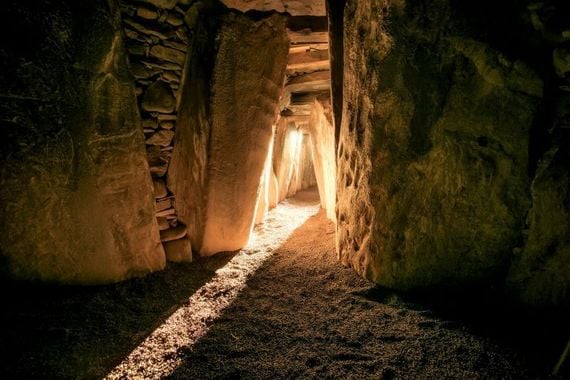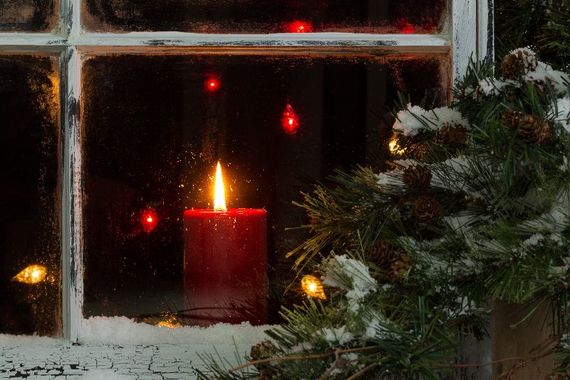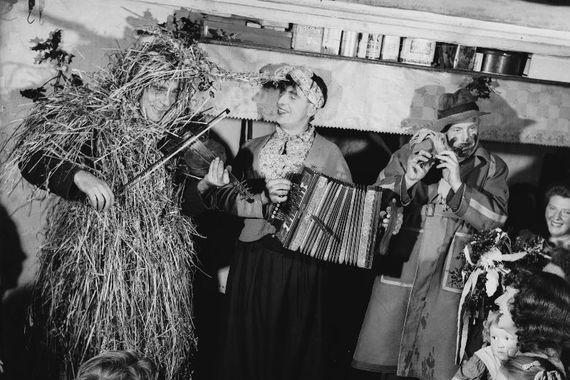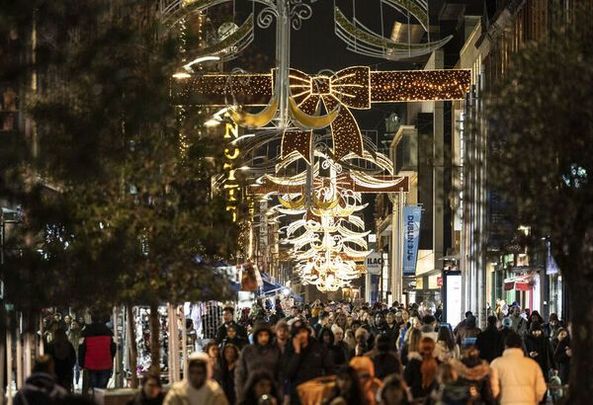December in Ireland is characterized by poor weather and dark clouds. The days are short and often dull; daylight is both precious and fragile at this time of year. The 21st is the shortest day of the year and if we’re lucky, the feeble sun provides a meager seven hours of brightness. And yet, out of the bleakness comes a time of great joy and festivity. For many, it is the highlight of the year, and few would miss the opportunity to gather with family and friends to celebrate Christmas.
It’s quite common for Irish people to use phrase ‘the Christmas’ as in ‘I’ll be home for the Christmas’. This is our way of signifying its special place in our hearts. The season spans from 8th December, traditionally the day when country people visit towns and cities to visit the shops, to ‘Nollaig na mBan’ or Women’s Christmas on 6th January. Most of the festive activities take place between these dates as we collectively defy the winter gloom and embrace the joys of life.
Much of what we do for ‘the Christmas’ is taken for granted: homes and buildings are decorated, exiles return, we feast on food and drink, exchange gifts and remember those who have passed away. These practices are so familiar that we may never stop to ask why all this happens the way it does.
Since the earliest times people on the island of Ireland have recognized the significance of the shortening days and the importance of the winter solstice as the turning point of the year.
The winter solstice
The great stone monuments of the Boyne Valley were constructed by our ancestors over five thousand years ago. We know very little about the people who built them – who they were or what they believed. However, we do know that the movements of the sun and the cycle of the seasons were central to their culture.
The annual spectacle at Newgrange is a testament to their skills as astronomers and builders. The large, dome-shaped passage tomb is precisely aligned to capture the rays of the rising sun on the shortest day of the year. Few are permitted to witness first hand; however, in recent years it can be viewed online. It works best on a clear day when, as the sun ascends above the horizon, a shaft of light channels between perfectly positioned stones and illuminates the vast inner chamber. It really is a wow moment!

The chamber at Newgrange, County Meath, on the morning of the winter solstice.
Bringing light to the dark days of winter must be one of the oldest traditions of humankind. Today we light up our streets, houses, public buildings and of course Christmas trees. I like to think of Newgrange as perhaps the earliest example of turning on the Christmas lights.
The tradition of marking the winter solstice by alignment with the winter sun was widespread through Celtic times. In Celtic mythology, the winter solstice was associated with the ongoing struggle between the Oak King and the Holly King. Today we still gather holly at Christmas and make our fires with oak and ash logs.
Christian traditions
With the coming of Christianity, the winter festival merged with the practices of the new religion and the focal point shifted to 25th December and the Feast of the Nativity. For most Irish people today, Christmas is still a sacred celebration of the birth of Christ. Christmas cribs with figurines of the Holy Family and stable animals are placed in churches and homes. Many participate in special services and events such as Midnight Mass, carol singing and bell ringing. On Christmas Day churches are packed more than usual with once-a-year mass goers, and migrant returners swelling the numbers.
One of the nicest and most enduring customs is to place a lighted candle in the window of every house on Christmas Eve. It is associated with the guiding Star of Bethlehem and is a sign of welcome for returning travelers and a reminder of friends far away. A less common practice, also on Christmas Eve, is to place a slow-burning log on the fire so that it glows throughout the night. Long ago it was said that on Christmas Eve donkeys could be seen kneeling in the fields in honor of birth of Jesus. In some places the local lore also suggested that farm animals have the power of conversation on that special night, however, it was bad luck to listen in!

A welcoming candle in a window at Christmas.
This wonderful mix of Christian and pre-Christian practice continues to this day. Holly, ivy and fir trees are used to decorate our homes. The evergreens remind us of the resilience of life and the red berries symbolize its regeneration. Mid-winter was always a good time to make a feast. Stored food may not last through the entire winter and it was tough luck for the goose or calf that would not be needed the following year.
Mummering
A practice, rare nowadays, is the tradition of Mummering at Christmas. Bands of ‘mummers’ usually neighbors dressed in strange costumes, travel from house to house to sing, dance, and make mischief. It’s fun and light-hearted and they are often rewarded with food and drink. As the evening progressed, they grew more boisterous with alcohol, and this may have contributed to the eventual demise of the tradition.
Wren Boys

Wren Boys of old.
In other parts of Ireland, most notably in towns like Dingle in Kerry, the “Wren Boys” still follow a similar tradition on Saint Stephen’s Day. The boys are supposed to hunt the wren as it is said the small bird chirped and gave away the location of the bush where St Stephen was hiding. Don’t worry! nobody today actually hunts the birds; these days the Wren Boys are all about marching around, playing music, dancing, and having fun.
Women's Christmas
The 12 days of Christmas last from Christmas Day to Women’s Christmas (aka the Feast of the Epiphany or Little Christmas). It is considered bad luck to take down any of the decorations until that day. As the name suggests, this is a special day where the women of the house are waited on and privileged. On this day, women frequently gather in pubs or go to visit other houses, it’s a time to thanks and reflection at the close of the season.
Epiphany is also the day where James Joyce’s celebrated short story The Dead from the Dubliners collection takes place. It’s a sad piece with beautifully observed insights on the season of Christmas and the tragedy of regret. It concludes with a powerful evocation of the Irish winter:
“Yes, the newspapers were right: snow was general all over Ireland. It was falling on every part of the dark central plain, on the treeless hills, falling softly upon the Bog of Allen and, farther westward, softly falling into the dark mutinous Shannon waves.”
- James Joyce The Dead.
Although Christmas in Ireland continues many of the old customs and traditions it is also evolving and adapting to the modern world. The essence of ‘the Christmas’ is still about family, spirituality, and the annual cycle of the seasons. There are new rituals nowadays, greeting returning diaspora at the airport, the cold swim on Christmas Day, big horseracing meetings on Stephen’s Day and the gatherings on-line to bring us closer together. Through all of these we continue a tradition that takes us all the way back to our ancestors who built monuments to bring light and hope to our lives at the darkest time of the year.
Happy Christmas!




Comments